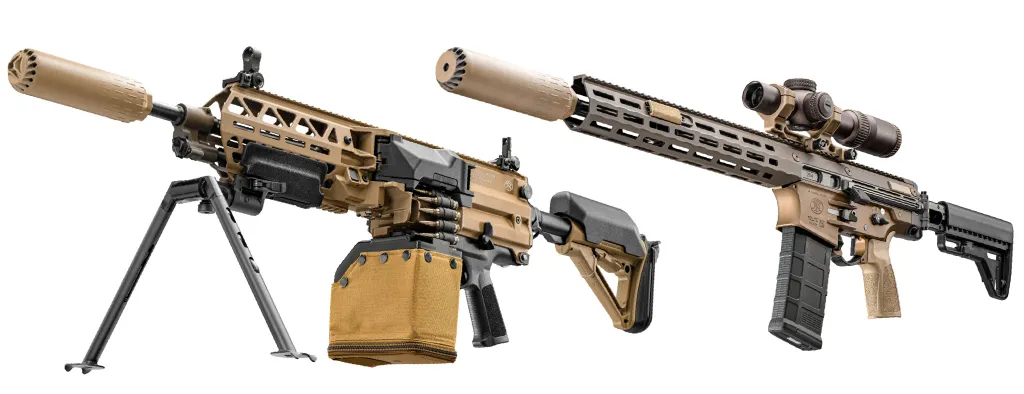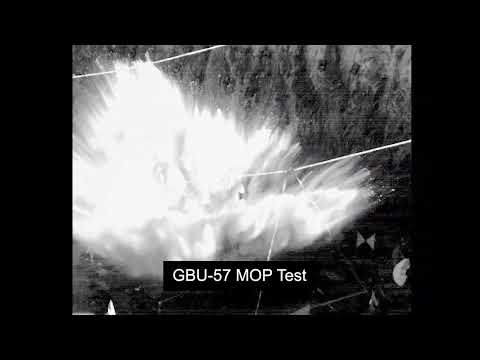FN America Delivers New 6.5mm Machine Gun, Rifle Prototypes For U.S. Military Testing
The American subsidiary of Belgian gunmaker Fabrique Nationale (FN) has delivered new prototype rifles and machine guns chambered to fire the 6.5x43mm Lightweight Intermediate Caliber Cartridge (LICC) to the U.S. military. LICC is one of several avenues the U.S. military has pursued in the past decade to find new small arms that offer greater range and terminal effectiveness, particularly over existing types firing the 5.56x45mm round. Though a U.S.-led effort, Canada has also been deeply involved in LICC.
FN America put out a press release today saying it had provided an unspecified number of test samples of the LICC-Individual Weapon System (LICC-IWS) and LICC-Assault Machine Gun (LICC-AMG) to the Irregular Warfare Technical Support Directorate (IWTSD). The IWTSD, first established in 1999 as the Combating Terrorism Technical Support Office (CTTSO), resides within the Office of the Assistant Secretary of Defense for Special Operations and Low-Intensity Conflict. It is charged with identifying and developing new capabilities primarily to aid in irregular warfare operations. In U.S. military parlance, irregular warfare is an umbrella term that encompasses a host of lower-intensity mission sets, including counter-insurgency and counter-terrorism, as well as advising and assisting foreign forces, often performed by special operations units.

The LICC effort traces its roots back to the mid-2010s. The 6.5x43mm cartridge evolved directly from the .264 USA round, which was developed internally by the U.S. Army Marksmanship Unit (AMU). FN has been under contract to develop a weapon system to go with the LICC ammunition since 2019. The steel-cased 6.5x43mm rounds are 20 percent lighter than equivalent cartridges with brass cases, and have better accuracy, range, and performance compared to typical 5.56x45mm loadings, according to the company.

The LICC-IWS is a version of FN’s Improved Performance Carbine (IPC). Though it has some broad external resemblances to the AR-15/M16 family, as well as larger AR-10-style guns, the IPC is a proprietary gas-piston operated design that first broke cover in 2023.
FN America has developed three subvariants of the LICC-IWS with 12.5-inch, 14.5-inch, and 18-inch barrels, referred to as the Close Quarters Battle, Carbine, and Designated Marksmanship Rifle types, respectively. The company says the 14.5-inch barrelled version is 35 and a half inches overall (32 and a half inches with its stock collapsed) and weighs 7.75 pounds. This puts it in the same general size and weight class as the 5.56x45mm M4A1 carbine, which continues to be widely issued across the U.S. military and has been something of a control standard for the LICC effort.

“Initial test firing results from the U.S. Army Marksmanship Unit and other operators show that the accuracy of the LICC-IWS is consistently two times better than the M4A1,” Jim Williams, Vice President of Military Programs for FN America, said in a statement today. “Additionally, the LICC-IWS handles like the M4A1, yet remains soft shooting when firing the new 6.5×43 lightweight ammunition.”
The LICC-AMG is a 6.5x43mm variant of FN’s Evolys machine gun, which made its public debut in 2021. The belt-fed Evolys is also offered chambered in 5.56x45mm and 7.62x51mm. The LICC version has a 14.5-inch barrel, is nearly 40 inches long overall (36 and a half inches with its stock collapsed), and weighs nearly 14 pounds. FN America says it has tested the LICC-AMG against its Mk 48, Mk 46, and M249 Squad Automatic Weapon (SAW) machine guns. The Mk 48 is a 7.62x51mm derivative of the 5.56x45mm M249. The Mk 46 is a special-purpose subvariant of the M249. All three types are in service with various elements of the U.S. military.

“In prototype testing, the AMG was more accurate than the FN MK 48 in full auto mode,” according to FN America’s release today. “Overall, the AMG demonstrated improved performance in lethality, accuracy, durability, balance, and handling over the FN M249 and FN MK 46/MK 48 machine guns.”
“FN’s ultimate goal is to advance from development into production and field a final solution that provides operators a system that is easier to operate, more accurate and more effective than anything available today,” Mark Cherpes, President and CEO for FN America, also said in a statement. “After this test and evaluation phase, our plan is to take user feedback, fine-tune the systems, and move into low-rate initial production.”
“Multiple users will test the operational samples, providing critical feedback to aid FN and IWTSD in the final development of the systems,” today’s press release adds.

All this being said, what the exact plan is going forward for the LICC effort, and who might be in line to field the LICC-IWS and/or the LICC-AMG on any level, is not entirely clear. Key to the genesis of the preceding .264 USA cartridge were lessons learned by U.S. forces from combat in Afghanistan during the Global War on Terror era, where being outranged was a common complaint.
“Tactical operators require an integrated, user-tailorable, lightweight shoulder-fired individual weapon and lightweight intermediate caliber cartridge (LICC) that can overmatch the current maximum effective range and terminal effects of peer, near peer, and future threat individual weapons and ammunition, while also defeating current and emerging threat individual protective equipment out to 800 meters,” what was then CCTSO had said in a Broad Agency Announcement (BAA) contracting notice back in 2018.
Since then, the U.S. Army has selected a new standard service rifle and replacement for the M249, the M7 and M250, both from Sig Sauer and chambered to fire a 6.8x51mm round. The Next Generation Squad Weapons program that birthed those weapons was driven heavily by the same concerns about range as LICC, as well as improvements in adversary body armor.

Army special operations units were involved in developmental testing of the M7 and M250, though it remains to be seen how widespread the use of those guns within the broader special operations community might be in the end. The M7 rifle has been the subject of some controversy recently, including criticism about its weight, bulk, and increased recoil compared to the M4A1, as you can read more about here.
In recent years, the U.S. special operations community has also increasingly embraced the 6.5mm Creedmoor round, again because of the increased range, accuracy, and terminal performance it offers over 5.56x45mm, as well as 7.62x51mm. U.S. Special Operations Command (SOCOM) has ordered examples of at least two new rifles in this caliber in the past two years, and has also been evaluating belt-fed machine guns chambered to fire this round.

This all prompts a question of whether the IWTSD is now continuing to pursue LICC with more of an eye toward requirements from foreign allies and partners. As mentioned, Canada is known to be heavily involved in the effort. The 2018 BAA notably used Colt Canada’s C8 Special Forces Weapon (SFW), an AR-15/M16 pattern carbine distinct from the U.S. standard M4A1, as the comparison point for many of the stated LICC requirements. At the time of writing, the LICC-IWS and LICC-AMG pages on FN America’s website notably show the IWTSD logo and the crest of Canadian Special Operations Forces Command (CANSOFCOM).

“With an eye to the future, CANSOFCOM is pursuing a NATO Standardization Agreement (STANAG) for 6.5 x 43 mm in partnership with at least one additional NATO member,” Soldier Systems Daily reported earlier this year, citing unnamed sources. “At this point, the other party has not been disclosed. However, I know it is not the US, which has been working on the 6.8 x 51mm common case cartridge as their path forward.”
Canada has historically been very tight-lipped about its special operations community.
Whatever the case, FN America is clearly continuing to work with the IWTSD to advance the LICC effort, with series production of guns chambered in that round now said to be finally on the horizon.
Contact the author: [email protected]








